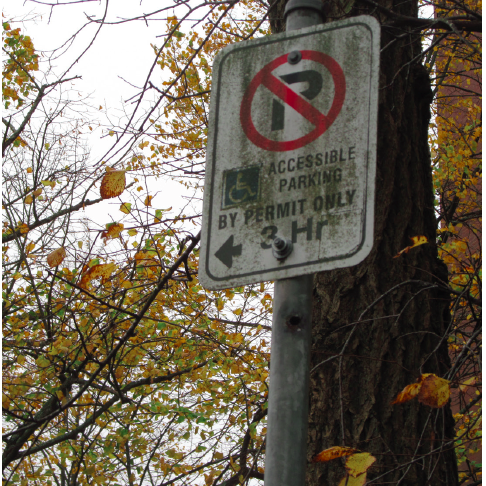
Still no decision on University Ave. bike lanes
Proposed lanes receive criticism for damaging accessibility
In recent years, the Halifax Regional Municipality and Dalhousie University have developed a plan to implement bike lanes on campus – not without controversy.
The bike lanes would be on University Avenue, between Robie and LeMarchant St., and would exclude the university “U” and part of the Nova Scotia Public Archives.
While providing protection for cyclists on campus, these proposed bike lanes would also remove many wheelchair-accessible parking spots.
The shorter track was decided on because the Archives protested the loss of both of their handicapped parking spaces in front of their building.
On September 29th, the Dalhousie Student Union (DSU) and the Equity and Accessibility (E&A) office held a town hall to discuss the impact that the proposed bike lanes would have upon accessibility on campus.
DSU President Dan Nicholson and E&A office employee Andrew Childerhouse moderated the discussion.
The one-to-two-year pilot projects would entail the removal of nine wheelchair-accessible parking spots and place bollards along the lanes in order to protect cyclists.
The accessible spaces would be moved to side streets, adjacent to University Ave. and the University U in front of the Killam Library. There would be drop-off spaces along the bike lanes for goods and services and people.
The bike lanes were supposed to have been installed in time for the beginning of this school year.
They were delayed because Dawgfather PhD, a hot dog vendor directly in the path of these bike lanes, filed an injunction with Halifax Regional Municipality. The court date will be Oct. 27.
The Importance of Maintaining Accessibility
While the bike lanes would be a gesture toward sustainability and a commitment to bike safety, issues around accessibility for those with limited mobility cannot be ignored.
Accessible parking spaces would be moved from in front of the building, near accessible doors, to side streets. There would be five new, unmetered accessible parking spots in front of the Killam.
The seemingly small distance between current spaces and proposed moves is much larger to people with impaired mobility, especially taking Halifax’s extreme winter weather into account.
It turned out that promises from Dalhousie and Halifax Council to maintain handicapped spaces and accessibility could be empty.
Moving the handicapped spots to side streets was called “problematic” by Mary MacDonald, a disabled student, considering last year’s snowfall. She called the condition of the streets “derelict” and had no confidence that these side streets would be adequately cleared.
University Ave. is a Class 1 priority when it comes to snow clearing, making its accessibility and safety guaranteed. When asked about these side streets, a representative from HRM said that wherever there was accessible parking, it would be “given the highest priority,” according to Nicholson.
“That may or may not be true,” he admitted after.
“Moving these spots to side streets was a significant barrier,” says MacDonald.
Dalhousie is in charge of snow removal on sidewalks, making their clearing less of a worry. However, there are no guarantees that the snow removal on side streets, HRM’s responsibility, will be taken care of.
MacDonald made her lack of faith in HRM to remove the snow, especially after last winter, known.
There is no confirmation at this time that the drop-off space will be big enough for an accessi-bus to pull up directly to the curb and lower its ramp if there is no curb-cut. A curb-cut is necessary for wheelchairs to get from sidewalk to road.
Nicholson will be raising the issues with Nathan Rogers, Assistant Director, Capital Planning at Dalhousie, the E&A and Human Resources offices at Dal, and Halifax city councillor Waye Mason of District 7.
Nicholson said, “The University has committed to putting in more accessible parking spots, if requested, though that still poses an issue. It’s not the quantity. It’s the quality,” he acknowledged.
“There will be unmetered parking spots in the U, in front of the Killam. We also requested that curb-cuts be installed closer to the new parking spaces, which they also said ‘no problem’ to.
“The DSU brought concerns to the University three times and they accepted them as they moved forward. It presents us with a little bit of hope that if we bring more concerns to them that they would be willing to address those concerns.”
MacDonald calls this a “deterioration of accessibility” and “discriminatory.”
She added before leaving, “Please don’t move the spots.”
Victoria Levak agreed, saying, “The bike lane could destroy my student life.”
In the mean time, students and individuals with limited mobility will have to wait to find out if the concessions promised will actually correct the question of accessibility.
More information about the accessibility of drop-off zones and whether people will be given priority over the unloading of goods, will be released in the next week or two, and posted to the town hall Facebook event page.
Other comments or questions may be directed to Nicholson (president@dsu.ca) or the Equity and Accessibility office (dsuequity@dal.ca).






